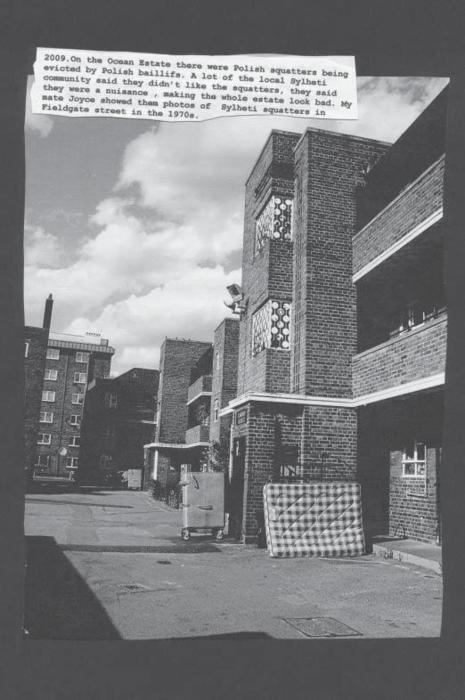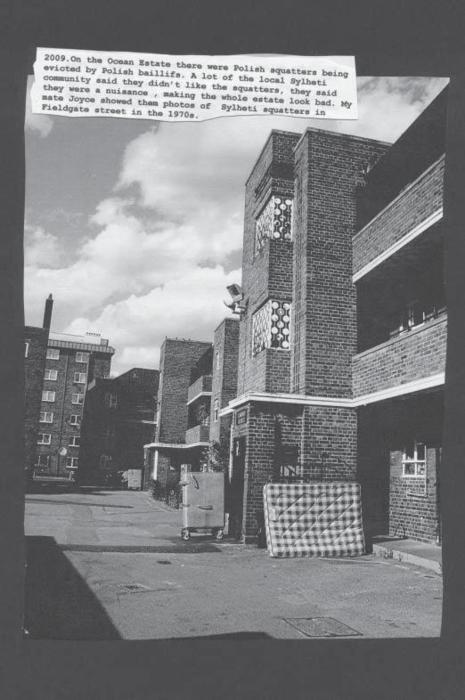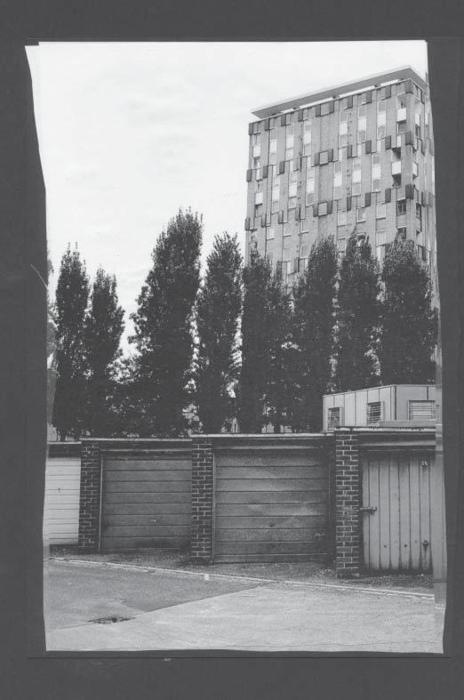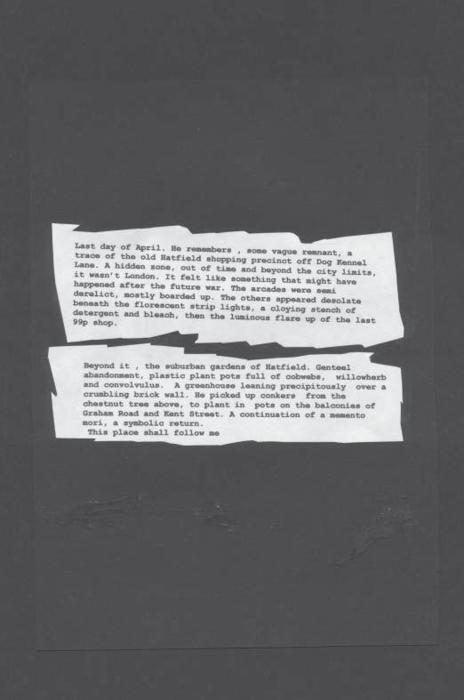Savage Messiah excerpted in The New Inquiry

Editors at the up-and-coming, and quite excellent, literary journal The New Inquiry have excerpted a few plates from Savage Messiah, Laura Oldfield Ford's zine and pastiche-as-polemic against the gentrification of London and the commodification of everything. A collection of the zine, also titled Savage Messiah, is now available from Verso with an introduction by Mark Fisher.
These images have exceeded, perhaps, their creator's expectations at the moment of their creation. The psychogeographer, wandering the city at twilight, challenging the wartime curfew, appropriating the constitutive elements of the city for a free play that reinvents the landscape, seems already a quaint figure from that impossible time when wandering the city could be seen as an act of revolutionary struggle in the everyday, rather than the simply unfortunate lot of thousands of the young, angry, and newly unemployed.

And so we find, like de Certeau's "transitory fugitive," several plates of Laura Oldfield Ford's Savage Messiah online. Through the dark veil of image compression, we see the ineffable traces of fingers and data—Ford's scissors, paper, glue, and fingers assembling text and image, urban landscape and black background, into a zine, already an old medium when she began the project in 2005. We see, also, or we imagine, the hands of a TNI editor lovingly or carelessly scanning not a zine, but a book—an even older, brutally older, medium—on the abused and little understood office copy machine.

Maybe, or maybe it's all made up, and it's impossible to even try and imagine the route Ford's writing has taken, and continues to take through media, through time, through the city itself—London, New York, or can we now drop the pretense and just say Brooklyn?— to reach us. Maybe that's the point.
It's not that the psychogeographer isn't dead, nor the zinemaker. Of course they're dead. The point is, they continue to haunt. Like Mark Fisher says in his introduction to Savage Messiah (the book):
Savage Messiah uses anachronism as a weapon. At first sight, at first touch—and tactility is crucial to the experience, the zine doesn't feel the same when it's JPEGed on screen—Savage Messiah seems like something familiar. The form itself, the mix of photographs, typeface-text and drawings, the use of scissors and glue rather than digital cut and paste; all of this makes Savage Messiah seem out of time, which is not to say out of date.
If haunting is, as Fisher argues, "a staining of place with particularly intense moments of time," then it's maybe the reader who is out of date, who is on the wrong side of the screen, and who must, by any mediatic means necessary, find a way to reinvent that lost tactility—to feel text, image, and city anew. To intensify.

Strangely, obtusely, the letter reaches its destination. A web entry featuring scanned and digitized images of a book, recently published by Verso, made from scanned, digitized, and then reprinted images of a zine, made of some original printed matter. But of course, we've all read our Baudrillard and know there's no such thing. But maybe, too, we've read our Borges, and know that it doesn't matter.